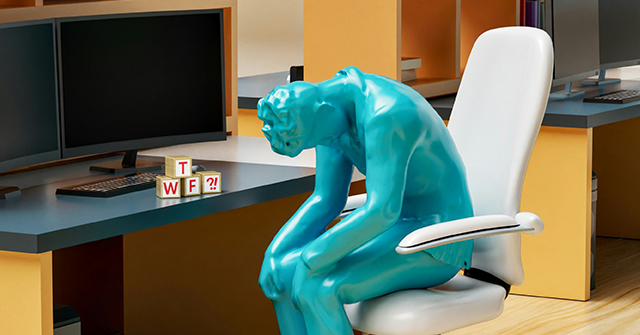Take This Jobs and Shove It
It is not just Kamala Harris who is looking for a better job.
Job satisfaction is down among U.S. workers, a survey released Monday by the Federal Reserve Bank of New York showed. Americans are increasingly dissatisfied with compensation, benefits, and promotion opportunities.
The New York Fed’s labor market survey, which is produced three times each year, paints the picture of a restless labor force. Just 88 percent of workers are employed in the same job they were four months ago. That’s down from 91.4 percent a year ago and the smallest share on record since the start of the survey a little more than a decade ago.
Satisfaction with wages fell to 56.7 percent, down from 59.9 percent in July of last year. Satisfaction with benefits dropped to 56.2 percent from 64.9 percent. Less than half of workers—44.2 percent—say they are satisfied with the job opportunities at their current gig, down from 53.5 percent.
The NY Fed notes that the declines in satisfaction were the largest among women, workers without a college education, and those in households with incomes lower than $60,000.
Job Dissatisfaction Rooted in Inflation
This growing job dissatisfaction is likely rooted in inflation. Adjusted for inflation, the median weekly wage for American workers is more or less unchanged compared with 2020—due to inflation eating away at the gains. Until recently, it was below prepandemic levels. But even now that it has turned ever so slightly positive—the real median weekly wage was $368 in the second quarter of this year, compared with $367 at the onset of the pandemic—this represents a long period of stagnation after the boom years of the Trump administration.
As the chart below shows, real weekly wages rose rapidly during the prepandemic Trump years, during the dot com boom in the Clinton years, and in the second term of Ronald Reagan’s presidency. But wages were stagnant under George H.W. Bush and his son and during the first six years of the Obama administration. (If you are wondering about that huge spike in 2020, that’s due to so many lower wage workers losing their jobs. This tends to push up the median wage of workers during recessions.)

Given this history, it’s no wonder that surveys of consumer sentiment remain moribund, especially when it comes to current economic conditions. The University of Michigan’s preliminary July survey of consumers showed the index of current conditions falling 2.9 percent compared with a month ago and down a staggering 19.3 percent from a year ago.
It’s become fashionable to write off depressed consumer sentiment as a function of partisanship. Paul Krugman, the New York Times columnist, has tried to convince many that consumer sentiment is only low because Republicans do not like a Democrat in the White House. But the current conditions index among Democrats has fallen from 106.7 in January all the way to 80.8, and the index among independents is down from 76.1 to 59.2.
This was not the way Democrats and their pundit cheerleaders in the establishment media thought things would go. As the year began, several predicted that consumer sentiment would continue to improve this year as inflation fell and the temporal distance from the worst inflation in four decades grew. Instead, inflation proved more stubborn than expected, and consumer views of current conditions have worsened considerably.
Americans Also Disapprove of Biden-Harris’s Job
Surveys also show that Americans are deeply unhappy with the economic leadership of the Biden-Harris administration. The most recent survey by YouGov for the economist found that Joe Biden’s approval rating was deeply underwater on the economy, with 52 percent disapproving and 39 percent approving. In fact, the number who strongly disapprove—41 percent—was higher than the combined somewhat and strong approve figure.
Most polls show that Harris is trailing Trump on economic issues. The most recent, from ABC News and Washington Post by Ipsos, gave Trump a nine-point advantage on the economy and a nine point advantage on the issue of inflation. In a poll for the Associated Press, 45 percent said they thought Trump would do a better job of handling the economy, versus 38 percent for Harris—an eight point lead for Trump. This suggests that an earlier poll for the Financial Times that gave Harris a slight edge on the economy was an anomaly.
More than 85 percent Americans rate inflation as highly important in their vote for president, according to ABC News, making those the top issue among the 11 tested by the Ipsos survey.
This suggests that if the Trump-Vance campaign can keep the election focused on economic issues, Kamala Harris may be forced to join the growing share of Americans who have found themselves working for a different employer or out of work altogether.
